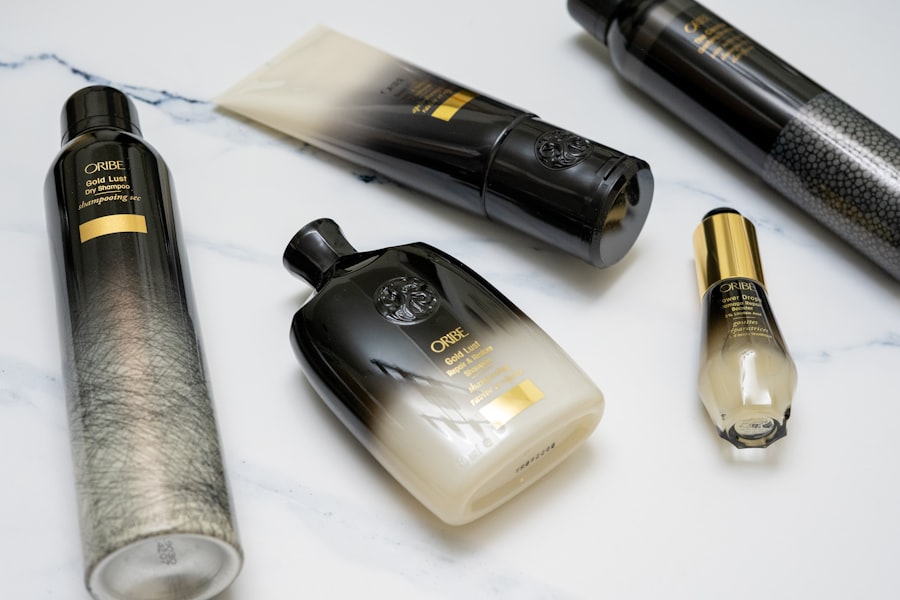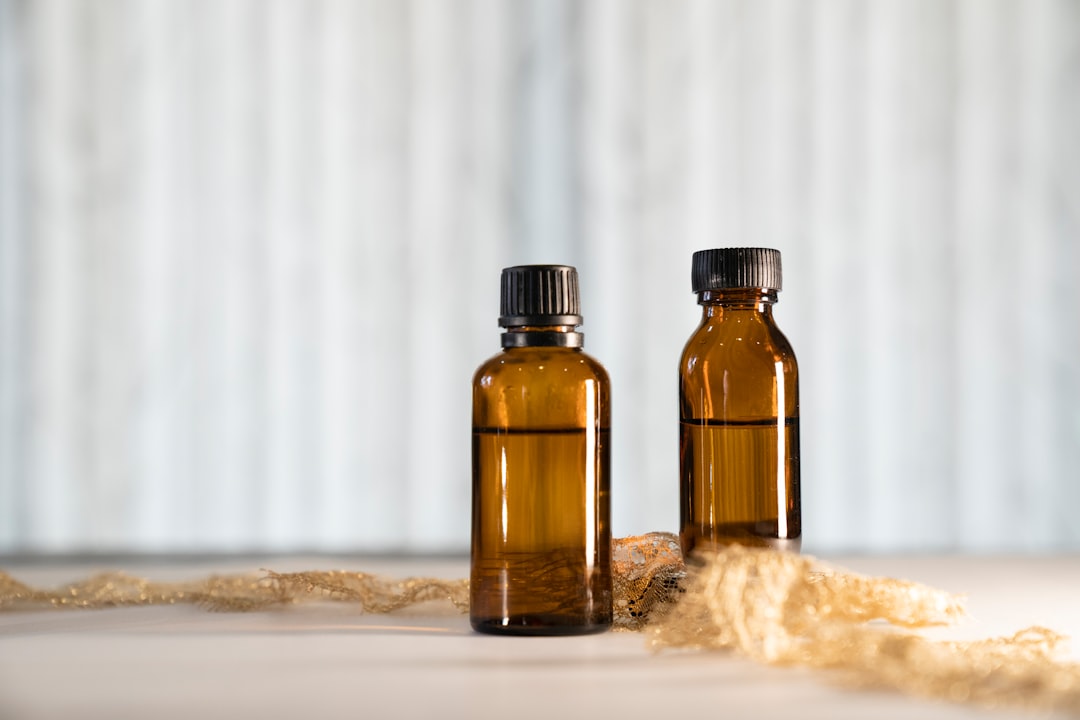Retinol is a derivative of vitamin A and is known for its powerful anti-aging and skin-renewing properties. It is a popular ingredient in many skincare products, including serums, creams, and lotions. Oily skin is characterized by an overproduction of sebum, which can lead to clogged pores, acne, and a shiny complexion. Many people with oily skin may be hesitant to use retinol due to concerns about exacerbating their skin’s oiliness. However, when used correctly, retinol can actually benefit oily skin by regulating oil production and promoting a clearer, more balanced complexion.
Retinol works by increasing cell turnover, which helps to unclog pores and prevent acne breakouts. It also stimulates collagen production, which can improve the overall texture and appearance of the skin. For those with oily skin, retinol can help to regulate sebum production, leading to a less shiny complexion and reduced risk of clogged pores. It is important to note that retinol can be drying, so it is essential to use it in conjunction with a moisturizer to maintain the skin’s hydration levels. Additionally, it is crucial to start with a lower concentration of retinol and gradually increase the strength as your skin builds tolerance. With the right approach, retinol can be a valuable addition to an oily skin care routine.
Summary
- Retinol can help control oil production and reduce acne in oily skin types by regulating cell turnover and unclogging pores.
- The benefits of using retinol for oily skin include reducing excess oil, preventing breakouts, and improving overall skin texture and tone.
- When choosing a retinol product for oily skin, look for lightweight, non-comedogenic formulas with a lower concentration of retinol to avoid excessive dryness and irritation.
- Some top retinol products for oily skin include La Roche-Posay Effaclar Adapalene Gel, The Ordinary Retinol 0.5% in Squalane, and Paula’s Choice 1% Retinol Treatment.
- Tips for using retinol on oily skin include starting with a lower concentration, applying it at night, using sunscreen during the day, and incorporating it gradually into your skincare routine.
- Potential side effects of using retinol on oily skin may include dryness, redness, flakiness, and increased sensitivity to the sun.
- In conclusion, incorporating retinol into your skincare routine can help achieve clear and healthy skin for those with oily skin, but it’s important to choose the right product and use it carefully to avoid potential side effects.
Benefits of Retinol for Oily Skin
One of the key benefits of using retinol for oily skin is its ability to regulate sebum production. Oily skin is often the result of overactive sebaceous glands, which can lead to clogged pores and acne breakouts. Retinol works by promoting cell turnover, which helps to prevent the buildup of dead skin cells and excess oil that can contribute to acne. By using retinol, individuals with oily skin can experience a reduction in shine and a clearer complexion.
In addition to regulating oil production, retinol can also help to improve the overall texture and appearance of the skin. It stimulates collagen production, which can lead to firmer, more youthful-looking skin. This is particularly beneficial for those with oily skin, as it can help to reduce the appearance of enlarged pores and acne scarring. Furthermore, retinol has been shown to have anti-inflammatory properties, which can help to calm redness and irritation associated with acne. Overall, incorporating retinol into a skincare routine for oily skin can lead to a more balanced complexion with fewer breakouts and improved skin texture.
How to Choose the Right Retinol Product for Oily Skin
When choosing a retinol product for oily skin, it is essential to consider the concentration of retinol and the formulation of the product. For those new to retinol, it is advisable to start with a lower concentration, such as 0.25% or 0.5%, and gradually increase the strength as your skin builds tolerance. This can help to minimise the risk of irritation and dryness, which can be more pronounced in individuals with oily skin. Additionally, it is important to look for products that are non-comedogenic, meaning they will not clog pores. This is particularly important for those with oily skin, as clogged pores can exacerbate acne breakouts.
In terms of formulation, lightweight serums or gels are often preferred for oily skin, as they are less likely to feel heavy or greasy on the skin. These formulations are also easily absorbed and can be layered with other skincare products without feeling too occlusive. It is also important to use a moisturiser alongside retinol to maintain the skin’s hydration levels and prevent excessive dryness. When choosing a moisturiser for oily skin, look for oil-free or non-comedogenic options that will not contribute to excess oiliness. By considering both the concentration and formulation of retinol products, individuals with oily skin can find a suitable option that will effectively target their skincare concerns.
Top Retinol Products for Oily Skin
There are several retinol products on the market that are well-suited for oily skin. One popular option is The Ordinary’s Retinol 0.5% in Squalane, which contains a moderate concentration of retinol in a lightweight squalane base. This product is non-greasy and easily absorbed, making it ideal for oily skin types. Another highly regarded retinol product is Paula’s Choice 1% Retinol Treatment, which combines a higher concentration of retinol with antioxidants and soothing ingredients to minimise irritation. This treatment is available in a light lotion texture that is suitable for oily skin.
For those looking for a more budget-friendly option, Neutrogena Rapid Wrinkle Repair Regenerating Cream is a drugstore favourite that contains a lower concentration of retinol alongside hyaluronic acid for added hydration. This cream has a lightweight texture that absorbs quickly and does not leave a greasy residue on the skin. Additionally, La Roche-Posay Redermic R Anti-Aging Concentrate is a gentle retinol serum that is suitable for oily, sensitive skin. It contains a lower concentration of retinol alongside soothing ingredients like madecassoside to minimise potential irritation.
Tips for Using Retinol on Oily Skin
When incorporating retinol into a skincare routine for oily skin, there are several tips to keep in mind to maximise its effectiveness and minimise potential side effects. Firstly, it is important to start with a lower concentration of retinol and gradually increase the strength as your skin builds tolerance. This can help to prevent excessive dryness and irritation, which can be more pronounced in individuals with oily skin. Additionally, it is crucial to use sunscreen daily when using retinol, as it can increase the skin’s sensitivity to UV radiation.
Furthermore, it is advisable to use retinol at night, as it can make the skin more susceptible to sun damage during the day. When using retinol, it is also important to apply it to dry skin after cleansing and before moisturising. This can help to maximise its absorption and efficacy without diluting it with other products. Finally, it is essential to be patient when using retinol, as it can take several weeks to see noticeable results. By following these tips, individuals with oily skin can effectively incorporate retinol into their skincare routine while minimising potential side effects.
Potential Side Effects of Retinol on Oily Skin

While retinol can offer numerous benefits for oily skin, it is essential to be aware of potential side effects that may occur when using this ingredient. One common side effect of retinol is dryness and peeling, particularly when first starting out or when using higher concentrations. This can be more pronounced in individuals with oily skin, as they may be more prone to over-drying. To minimise this side effect, it is important to start with a lower concentration of retinol and gradually increase the strength as your skin builds tolerance. Additionally, using a moisturiser alongside retinol can help to maintain the skin’s hydration levels and prevent excessive dryness.
Another potential side effect of retinol is increased sensitivity to UV radiation. Retinol can make the skin more susceptible to sun damage, so it is crucial to use sunscreen daily when using this ingredient. This is particularly important for those with oily skin, as they may already be prone to sun-induced hyperpigmentation or acne scarring. By using sunscreen regularly, individuals with oily skin can protect their skin from potential damage while using retinol. Overall, while there are potential side effects associated with retinol use on oily skin, they can be minimised by using the ingredient correctly and being mindful of its effects on the skin.
Achieving Clear and Healthy Skin with Retinol
In conclusion, retinol can be a valuable addition to a skincare routine for individuals with oily skin when used correctly. It offers numerous benefits, including regulating oil production, improving skin texture, and preventing acne breakouts. By choosing the right retinol product with an appropriate concentration and formulation, individuals with oily skin can effectively target their skincare concerns without exacerbating their oiliness. Additionally, by following tips for using retinol and being aware of potential side effects, individuals with oily skin can achieve clear and healthy-looking skin with this powerful ingredient. With patience and consistency, retinol can help those with oily skin achieve a more balanced complexion and improved overall skin health.
Discover the secrets to maintaining healthy and stylish stretched earlobes with our comprehensive guide on care, styling, and repair tips. Whether you’re a seasoned stretcher or a newbie to the trend, our article provides valuable insights and advice to keep your earlobes looking their best. And if you’re looking to enhance your skincare routine further, delve into our feature on The ABCs of Vitamin C: Harnessing the brightening and anti-aging benefits for your skin. Learn how this powerful ingredient can transform your complexion and combat signs of aging. For smoother, brighter skin, explore our selection of The Best Exfoliators for a radiant glow. Elevate your skincare game with these top picks that will leave your skin feeling rejuvenated and refreshed. (source)
FAQs
What is retinol and how does it work on oily skin?
Retinol is a form of vitamin A that helps to promote skin renewal and enhance collagen production. It works on oily skin by unclogging pores, reducing excess oil production, and improving the overall texture of the skin.
What are the benefits of using retinol serums and creams for oily skin?
Using retinol serums and creams on oily skin can help to reduce the appearance of enlarged pores, control excess oil production, and improve the overall clarity and smoothness of the skin. It can also help to prevent and treat acne breakouts.
How should retinol serums and creams be incorporated into a skincare routine for oily skin?
Retinol serums and creams should be used in the evening, after cleansing and toning the skin. It is important to start with a lower concentration of retinol and gradually increase the strength as the skin becomes accustomed to it. It is also essential to use a sunscreen during the day when using retinol, as it can make the skin more sensitive to the sun.
What are some key ingredients to look for in retinol serums and creams for oily skin?
When choosing retinol serums and creams for oily skin, it is beneficial to look for products that also contain ingredients such as niacinamide, hyaluronic acid, and salicylic acid. These ingredients can help to balance oil production, hydrate the skin, and exfoliate to prevent clogged pores.
Are there any potential side effects of using retinol serums and creams on oily skin?
Some potential side effects of using retinol on oily skin include dryness, redness, and flakiness. It is important to start with a lower concentration of retinol and gradually increase the strength to minimize these side effects. It is also essential to use a moisturizer to keep the skin hydrated while using retinol.




